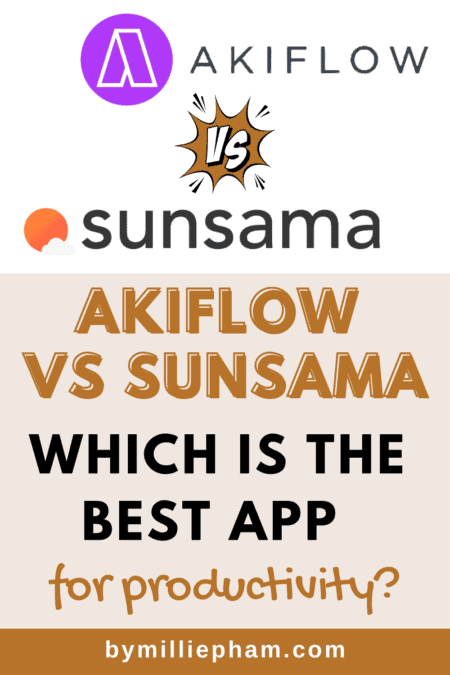Welcome to my in-depth comparison of Akiflow vs Sunsama, two task management tools that are making waves in the productivity space.
If you're curious about these apps or just beginning to explore your options, I've got you covered.
In this guide, I'll walk you through the main features and benefits of both Sunsama and Akiflow. Here's what you'll find out:
- How each app helps with organizing your daily tasks and managing your calendar
- Which app, Sunsama or Akiflow, might be a better fit for your personal work style
- A clear look at what's great and not so great about each option
- Which one gives you the most value for your money?
I'm here to give you the essential information you need to make an informed choice between Sunsama and Akiflow for your productivity needs.
By the end of this guide, you'll know exactly which tool could be the one to help you streamline your day-to-day tasks.
Ready to see what they have to offer?
Let's jump in!
Akiflow vs Sunsama Overview

Akiflow
Who should use Akiflow
Solopreneurs, freelancers, students
AI Scheduling
No
Focus Mode
Yes
Pomodoro Timer
No
Set Priority For Tasks
Yes
Schedule Meetings & Share Availability
No
Task Consolidation
Yes
Schedule Meetings
Yes
Pricing
$19/month (annually)

Sunsama
Who should use Sunsama
Small businesses
Yes
Focus Mode
Yes
Pomodoro Timer
Yes
Set Priority For Tasks
No
Schedule Meetings & Share Availability
Yes
Task Consolidation
Yes (much easier to use)
Schedule Meetings
No
Pricing
$16/month (annually)
Here’s a breakdown of my Sunsama vs. Akiflow guide:
Akiflow and Sunsama both have a lot of features that are the same, and they're pretty similar in how they work and what it's like to use them.
But each one also has special features where it might be better than the other.
Features unique to Akiflow:
- Time Blocking with Slots: Akiflow has a handy feature called "Slots" that lets you make a list of sub-tasks within a set time period. This is really useful if you like to plan your tasks and manage them over specific blocks of time.
- Meeting Management: Akiflow is great for handling meetings because it makes it easy to set them up, handle invites, and share when you're free (Just like Calendly). Sunsama doesn't have these features for managing meetings.
- Priority Management: Akiflow lets you use priority tags and labels to sort and see your tasks by how important they are.
- Command Bar for Quick Task Management: Akiflow has a command bar that makes adding and changing tasks fast, which is great for people who like to work quickly.
Features unique to Sunsama:
- Customization and User-Centric Design: Sunsama lets you change a lot of settings so you can make it fit just right with how you like to work. This is perfect for people who want a productivity tool that they can make their own.
- Collaborative Features: Sunsama helps teams work together by letting them share calendars, assign tasks, and discuss tasks in real-time, which is perfect for teams that need to work closely.
- Performance Analytics: Sunsama gives you detailed reports on your tasks for the day and week. This is really helpful for people who want to keep an eye on and improve their productivity as time goes on.
- Comprehensive Mobile App: Sunsama's mobile app is robust and has most of the features you find on the computer. This is great if you need to handle their tasks while they're out and about.
Sunsama Pros and Cons
Pros:
- Combines Tools: Sunsama brings together Jira, Asana, Trello, Todoist, and Google Calendar into one app for easier management.
- Improves Focus: Helps you prioritize and focus on the most important tasks, enhancing productivity.
- User-Friendly: The interface is easy to navigate, making planning and task management straightforward.
- Syncs Devices: The mobile app and desktop version work seamlessly together, making it convenient to manage tasks from anywhere.
- Mobile and Desktop Integration: While the app is optimized for desktop use, it also has a well-designed mobile app for on-the-go task management.
Cons:
- Expensive: It's pricier than many other productivity tools, which might be a concern for some users.
- Learning Required: You may need some time to learn how to use all its features effectively.
Akiflow Pros and Cons
Pros:
- It's got a clear layout and helpful reminders.
- It works well with other tools like Asana, which helps with planning out your time.
- You can see your tasks on a calendar, making it easier to plan your day.
- Time slots that allow sub-tasks
- Schedule meetings and share availability
Cons:
- Some users have had issues syncing with Trello, which can mess up the task details.
- The mobile app is still under development to work standalone.
- There is no Pomodoro timer.
- Akiflow is a bit pricey.
You can stop here if you've decided which tool to use. But if you want more details to help you choose, keep reading for a deeper comparison.
Akiflow vs Sunsama: A Detailed Side-by-Side Comparison
1. User Interface
Sunsama
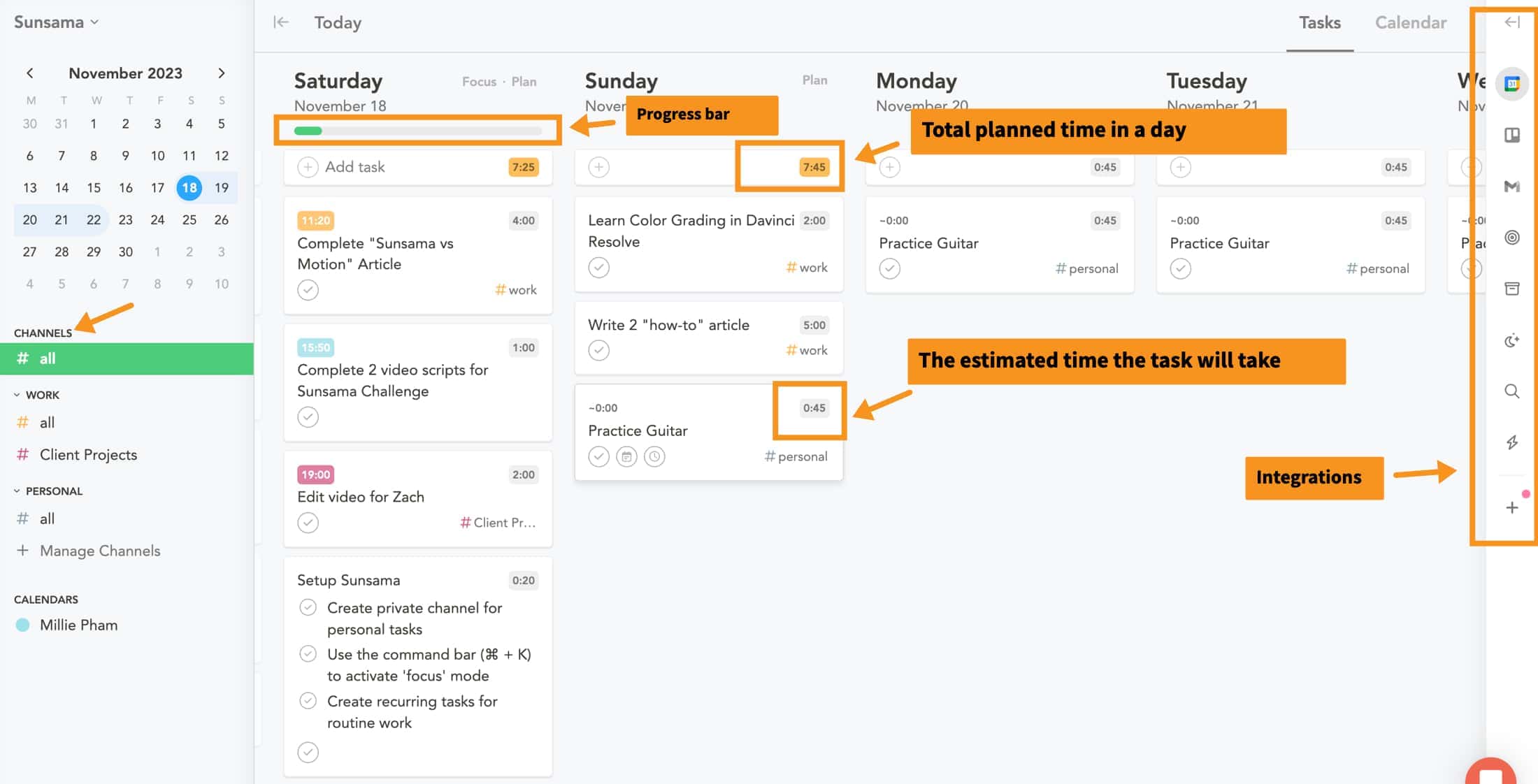
The Sunsama dashboard is designed to simplify your daily planning with an emphasis on clarity and usability.
It features a clean and minimalistic design that helps reduce distractions, making it easier for you to focus on the tasks at hand.
The dashboard is divided into two main sections:
- One side displays your calendar, where you can quickly see and manage your schedule.
- The other side houses 'channels', which organize your tasks into categories or projects.
This setup not only keeps your tasks neatly organized but also allows you to tackle your day with better focus and efficiency.
The intuitive interface of the Sunsama dashboard means you spend less time figuring out how to use the app and more time actually getting things done.
Akiflow
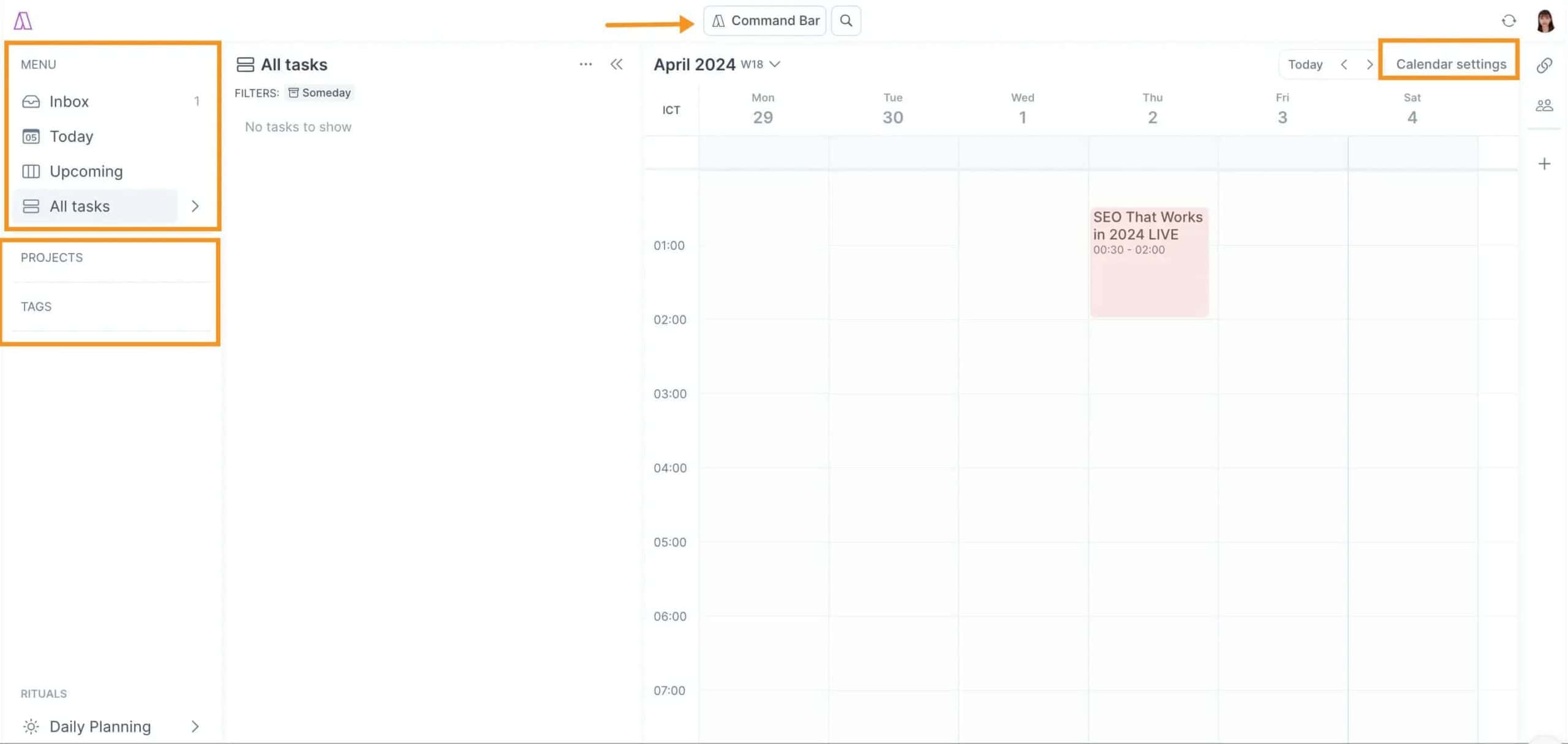
The Akiflow dashboard has a simple, two-part layout: tasks are on one side and the calendar is on the other.
This setup makes it easy to drag-and-drop scheduling directly into the calendar, making it highly effective for those who prefer a more streamlined, task-focused interface.
Conclusion
Akiflow has a simple, clean design that's great for people who want straightforward task management.
On the other hand, Sunsama offers a more detailed setup with extra features like daily planning and shutdown to help manage stress and organize your day.
If you like clear visual aids and planned-out days, you might prefer Sunsama's approach, which helps you balance your workload throughout the day.
Task Scheduling Features
Sunsama
Sunsama makes scheduling tasks easy and efficient. You can quickly add tasks, estimate how long they'll take, and then drag and drop them into your daily calendar.
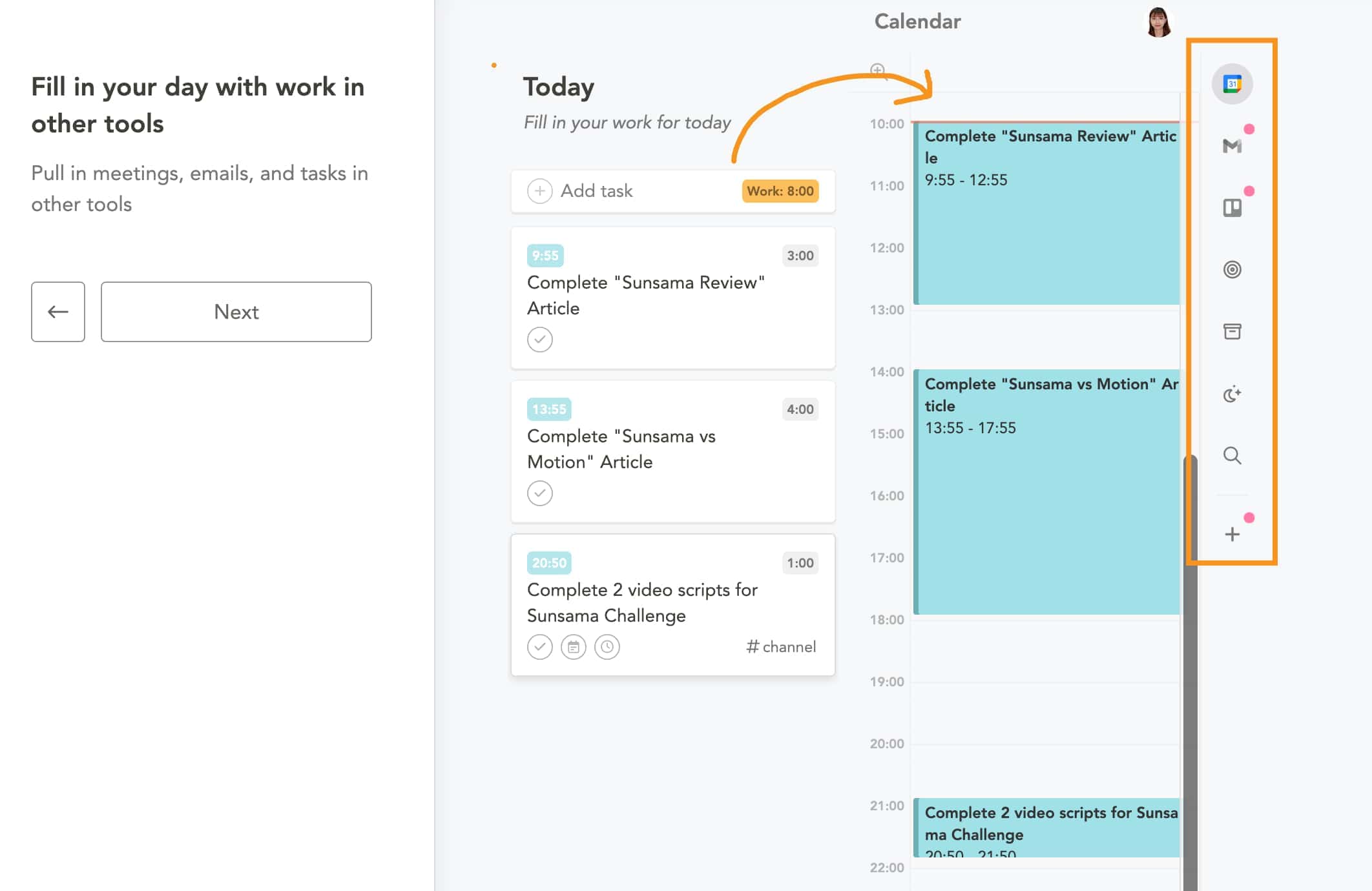
This helps you set a realistic schedule for the day without feeling overwhelmed.
Once your schedule is set, you can share it with team members via platforms like Slack or Microsoft Teams.
Sunsama also helps prevent overscheduling by alerting you when your day looks too packed, ensuring you're not overwhelmed.
Sunsama now includes AI features that automatically suggest the best times and channels for your tasks.
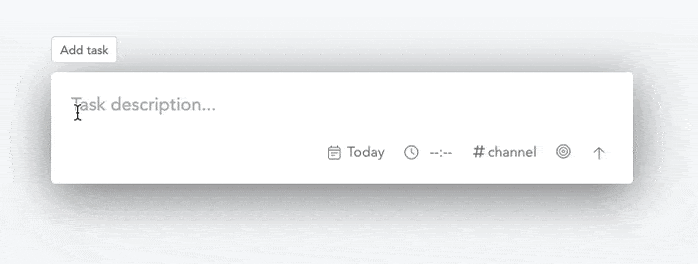
When you enter a task, the system offers a recommended time and a specific work channel, which can be saved directly if they fit your schedule.
If the suggestions aren’t quite right, you can easily modify them before saving.
Plus, Sunsama not only helps you manage your daily tasks efficiently but also allows you to organize them hierarchically using subtasks.
Just use the '>' keyboard shortcut in the task creation window to choose a parent task, and your new entry will automatically become a subtask.
This newly updated feature helps you break big projects into smaller, manageable parts, keeping your schedule organized and clear.
After wrapping up your day with Sunsama's Daily Shutdown and Weekly Review, the new "Daily Wrap" feature lets you easily share a summary of your work with colleagues.
This feature, currently in beta, creates a visual summary that includes details of your tasks, even those in other tools.
You can share your daily wrap via URL, email, or directly into communication platforms like Slack or Teams, allowing colleagues to see, react, and comment on your progress.
This encourages better communication and can serve as an alternative to daily standup meetings, keeping everyone updated effortlessly.
Akiflow
Akiflow shines at organizing your daily tasks efficiently and quickly.
A standout feature of Akiflow is the ability to place tasks directly on your calendar.
This lets you see your schedule clearly, whether it's for the day or the whole week, and supports time blocking—a method where you schedule specific times for different tasks. This feature is perfect for people who like having a structured day.
Furthermore, Akiflow supports detailed task management, where you can set deadlines, write descriptions, add links, and assign tasks to specific projects or labels.
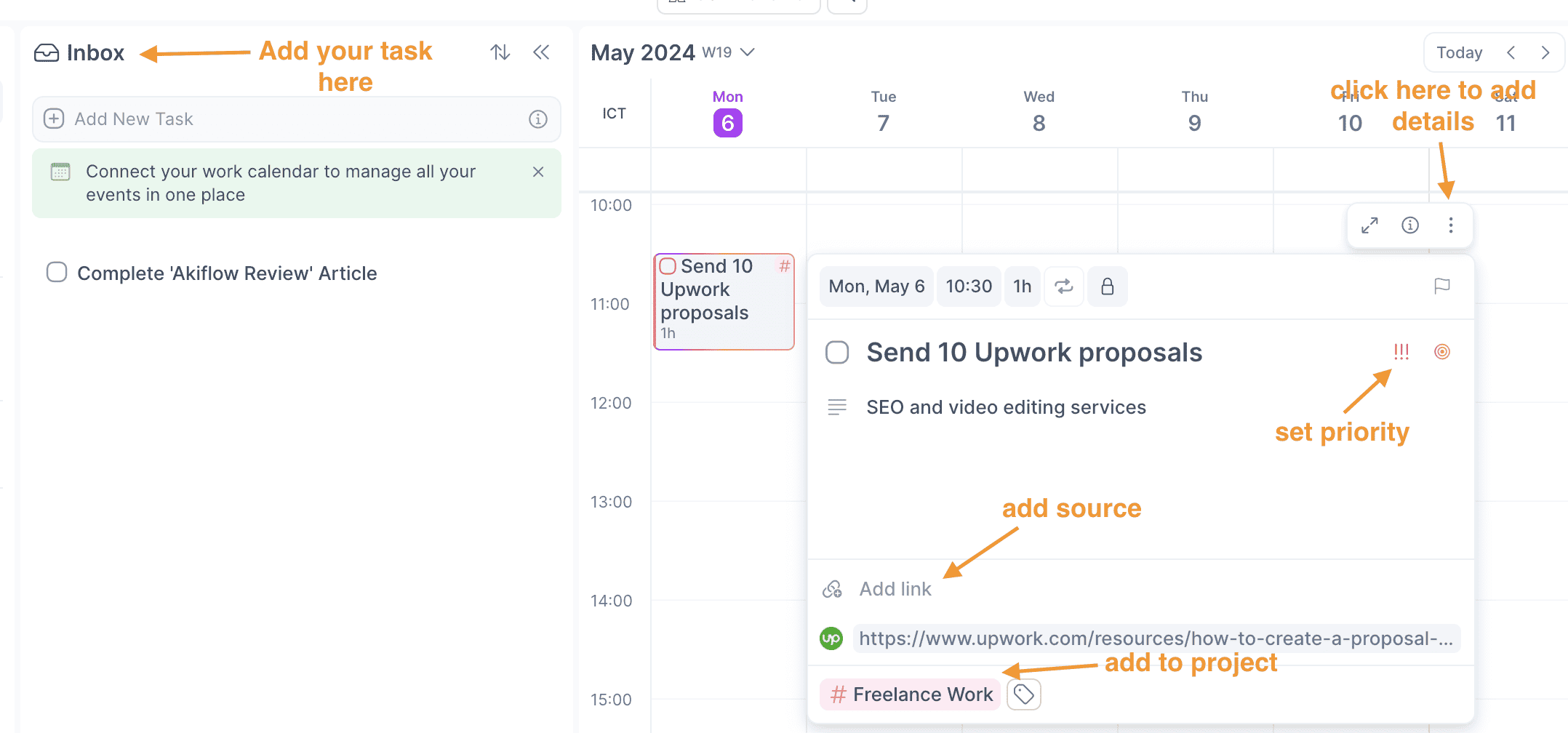
The way you can add details to your tasks is kind of the same as how you do it in Sunsama, but one thing better is that you can set priority with Akiflow, whether it's high, medium, or low.
This organizational structure helps in keeping your tasks well-managed and prioritized, ensuring that you can focus on what's most important without feeling overwhelmed.
Like Sunsama, it can pull tasks from different platforms like Todoist, ClickUp, and Gmail into one central dashboard.
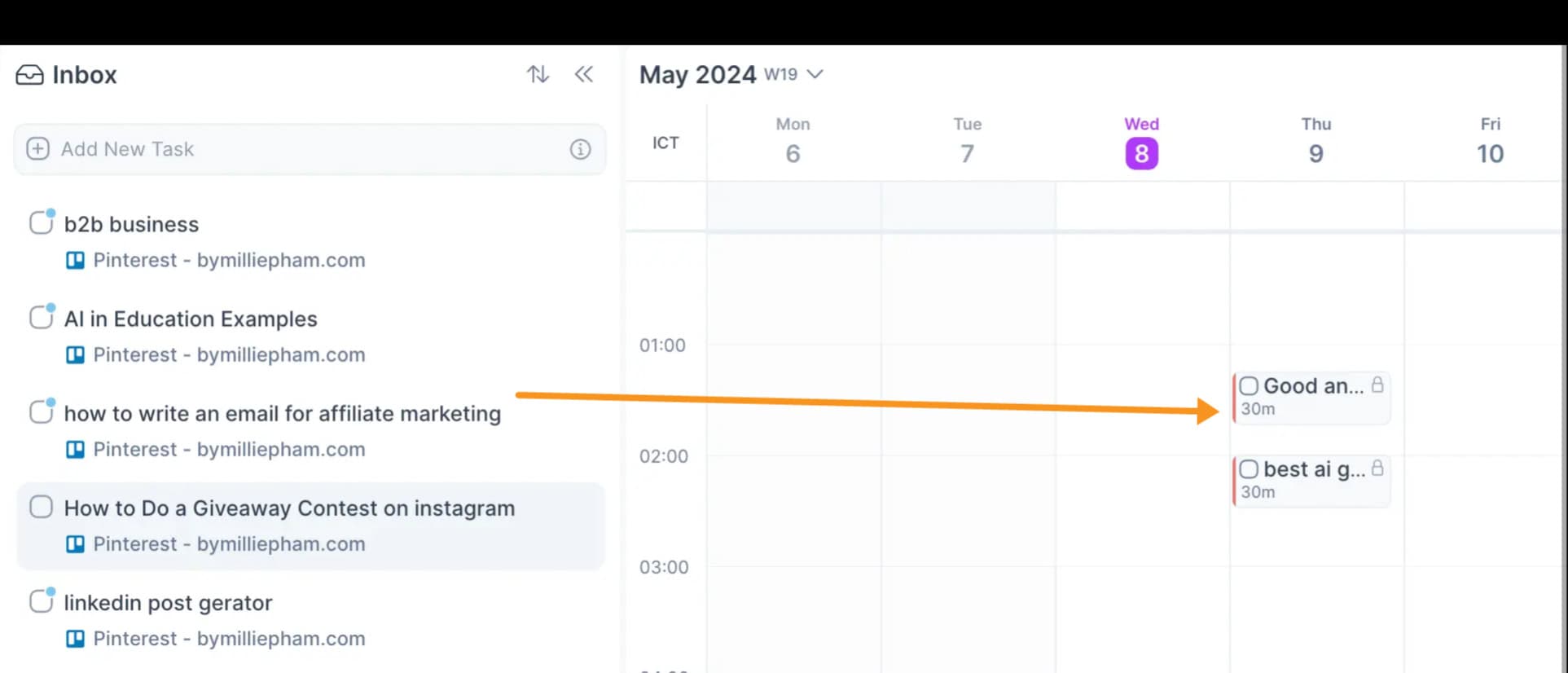
However, based on my experience, this integration feature in Akiflow can be somewhat cumbersome to use.
Unlike Sunsama, where you can easily identify the source of each task by the icons displayed on the task itself, Akiflow requires a bit more effort to navigate through the connected tools.
As with Sunsama, Akiflow makes it easy to allocate specific time slots for smaller tasks, allowing for micro-planning within your day to ensure every minute is used effectively.
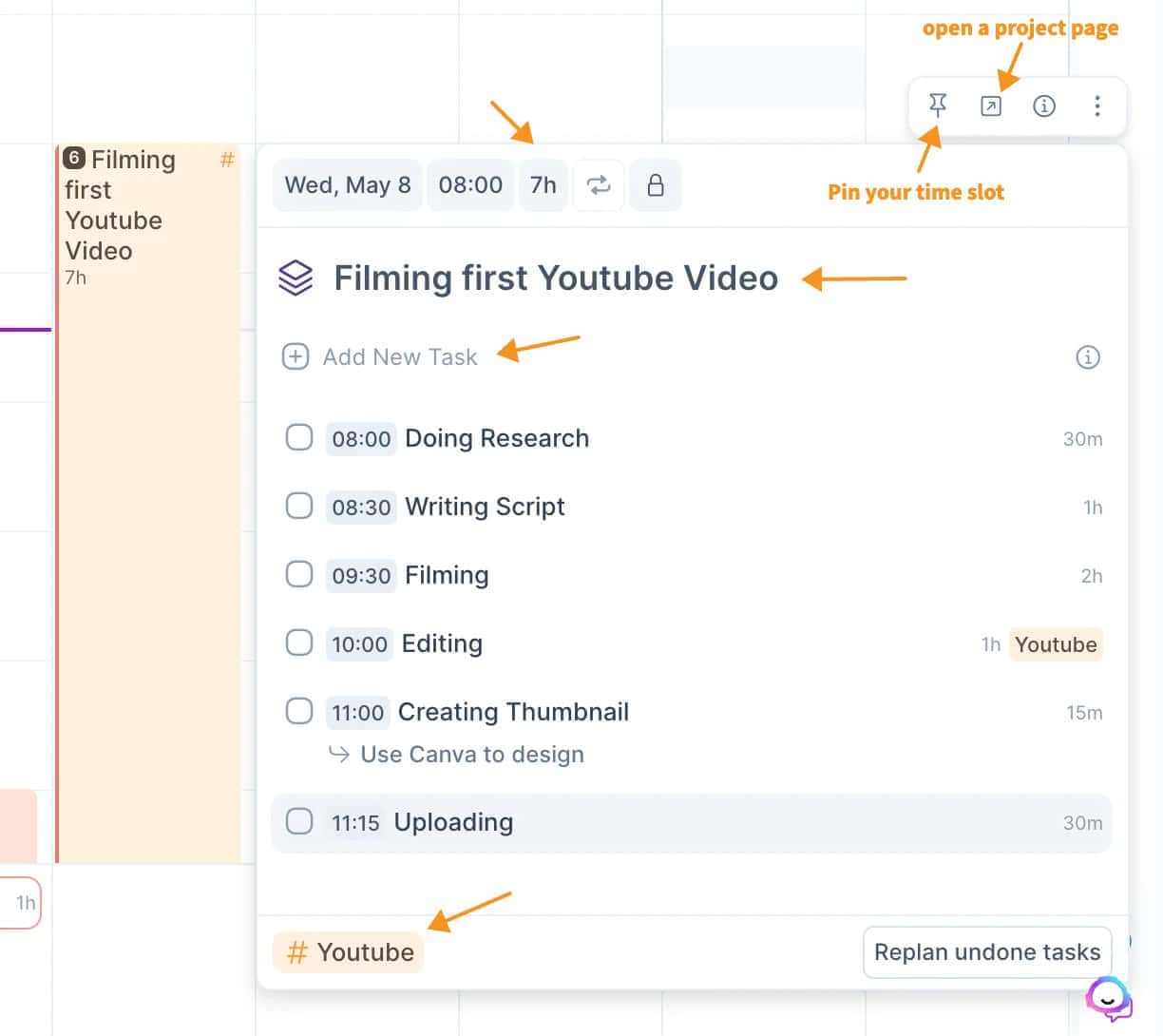
Also, one feature for scheduling tasks that Sunsama doesn't have is the Command bar.
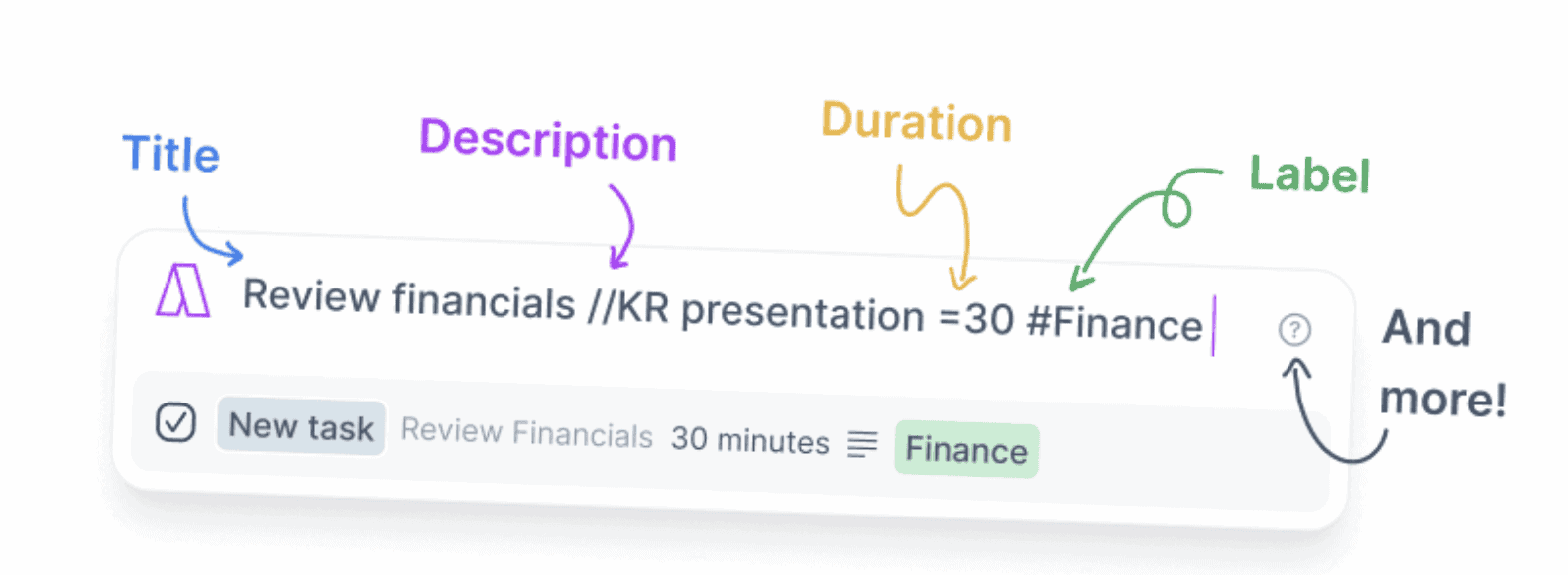
The Command bar in Akiflow acts like a shortcut tool, allowing you to quickly add tasks without interrupting your workflow.
It's a simple yet powerful feature that can save you time, especially when you're in the middle of something and an important task comes to mind.
Conclusion
Sunsama and Akiflow are both great for organizing your tasks, but they suit different needs. Sunsama is perfect if you like getting automatic suggestions to help plan your day more easily and keep a balanced schedule.
Akiflow works best for those who want a clear, quick, detailed approach to managing tasks, especially with its strong time blocking capabilities.
Integration with Other Tools
Sunsama
- Asana
- Trello
- JIRA
- GitLab
- GitHub
- Slack
- Google Calendar
- Outlook
- Monday.com
And with the latest update, Sunsama can now integrate with Zapier.
Akiflow
Here's a list of tools that Akiflow integrates with:
- Slack
- Gmail
- Notion
- Asana
- ClickUp
- Zoom
- Google Calendar
- Trello
- Todoist
- Jira
- GitHub
- Microsoft Teams
- Outlook Calendar
- Outlook Email
Additionally, Akiflow supports further integrations through Zapier and IFTTT, enhancing its connectivity with thousands more tools.
Pricing
Sunsama

Sunsama charges $20 per month, or $16 per month if paid annually. They also offer a 14-day free trial to test out their features.
Akiflow
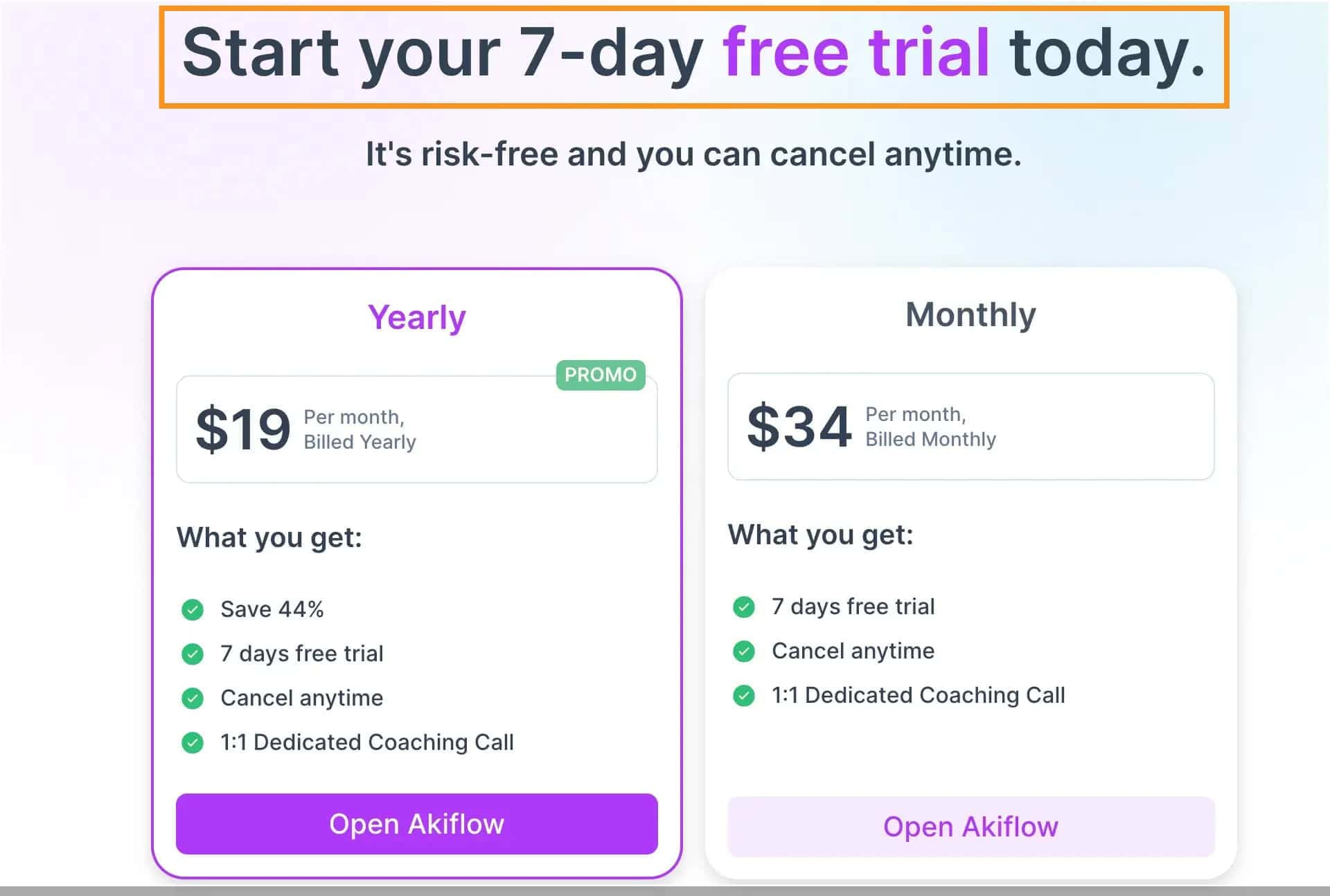
Akiflow’s pricing is simple. It costs $34 monthly, or $19 per month if you pay for the year upfront.
Before deciding, you can try Akiflow with a 7-day free trial (credit card required) to see if it fits your needs.
Conclusion
While both Sunsama and Akiflow have similar yearly pricing, Sunsama is slightly cheaper at $16 per month compared to Akiflow’s $19.
Monthly, Akiflow charges more at $34, whereas Sunsama is $20. Sunsama also offers a longer 30-day free trial, making it a more attractive option for those wanting to test features without committing right away.
Mobile Accessibility
Sunsama and Akiflow both offer apps for mobile and desktop, designed to keep you organized wherever you are.
Conclusion: Is Sunsama or Akiflow better?
Choosing between Sunsama and Akiflow depends on what you need.
If you like having a structured plan with AI help to manage your workload, Sunsama might be right for you. It's great for those who want help organizing their day.
If you prefer straightforward task management and strong integration with other tools, Akiflow could be better. It's ideal for those who like a direct, detailed approach to handling tasks.

